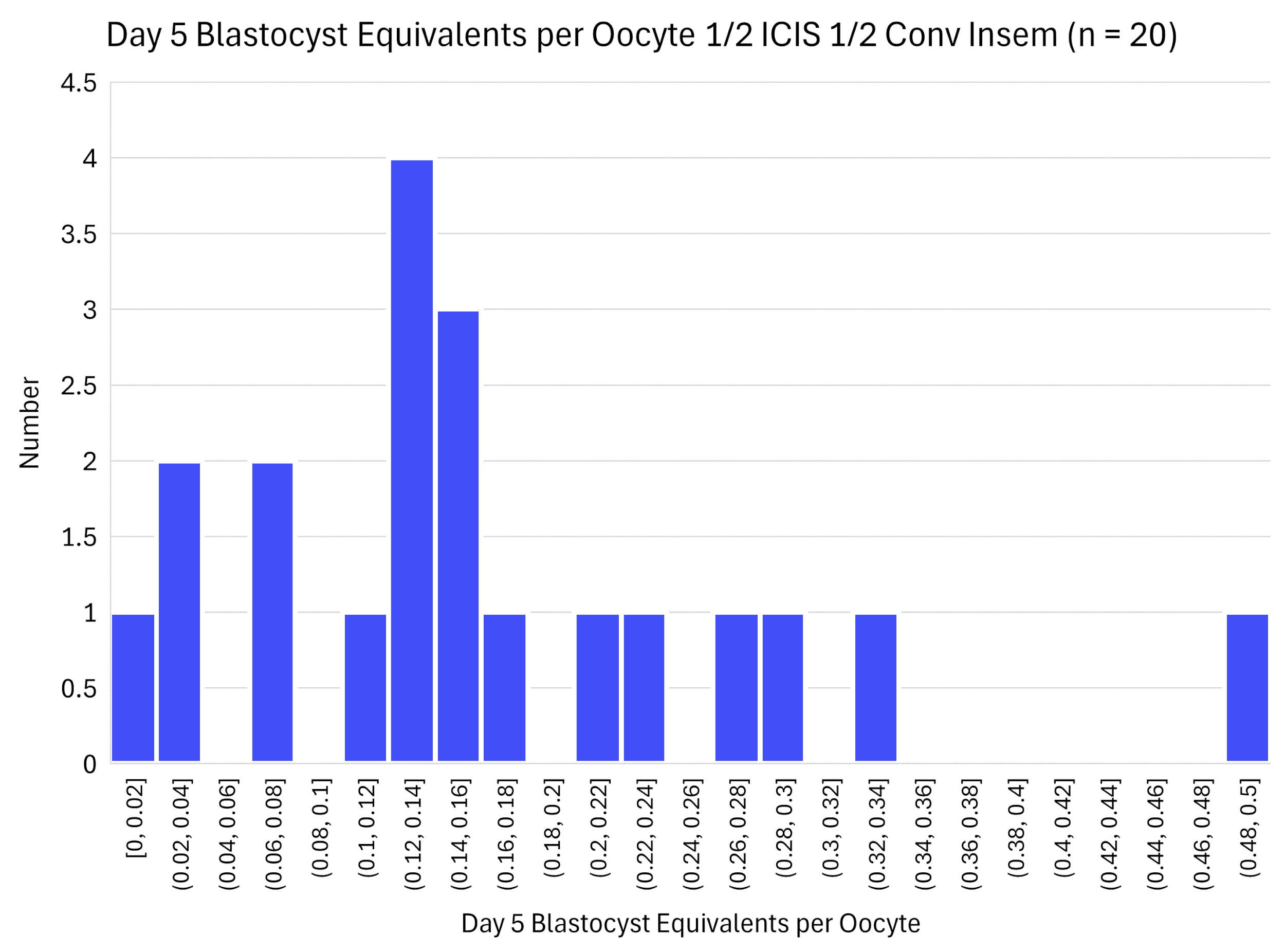
IVF Stimulation and Embryo Culture Quality Monitoring
IVF stimulation outcomes can be evaluated by graphing the number of oocytes retrieved based on the AMH (anti-mullerian hormone) level. Here we use the 3rd order polynomial trendline in Excel. As you can see, there is a lot of variability. This graph represents 6 months of IVF stimulations at a single center. The average female age is 34 years old and the average AMH is 3.2 ng/mL.
Embryo culture can be evaluated by graphing the number of blastocysts (embryos that grow for 5, 6, or 7 days) obtained based on the AMH level. Here we use the 3rd order polynomial trendline in Excel. As you can see, there is a lot of variability. This graph represents 6 months of IVF stimulations at a single center. The average female age is 34 years old and the average AMH is 3.2 ng/mL.
We could create graphs like this for different clinics to see which clinics have the best combinations of culture media and incubators.
We also need to take into account embryos transferred on day 3, before the blastocyst stage (day 5, 6, and 7). We also need to include morula stage embryos that are transferred on day 5 (fresh embryo transfer). Morula embryos have 50-100 cells. Blastocyst embryos have 200-300 cells.
We can use live birth data from this study to convert all embryos to day 5 blastocyst equivalents. We will assign morula stage embryos transferred to a value of 0.5 based on experience since there is not much data on these embryos.
We can make a histogram of day 5 blastocyst equivalents for 6 months of embryo culture data with each data point representing a cohort of fertilized oocytes (one IVF culture). The data is not normally distributed and approximately 10% of the embryo cultures result in not a single embryo usable embryo (defined as an embryo that is transferred or frozen). This data has not been reported in any scientific literature to date to my knowledge.
Lets now look at the data for ICSI (IntraCytoplasmic Sperm Injection) versus conventional insemination. The distributions are different in that conventional insemination is more likely to get very high rates of blastocyst formation but also more likely to have poor performance.
Sometimes it can be strategic to fertilize 1/2 of the oocytes in a cohort with ICIS and 1/2 with conventional insemination. For patients planning on multiple IVF cycles this can help determine the best method of fertilization for future cycles. For patients with average sperm counts this can hedge our bets by using both methods. In general the better the sperm concentration and morphology, the more conventional insemination is favored over ICSI.
The interesting thing we see in the histogram below is the rate of no embryos is low which seems to indicate that ICSI and conventional insemination fail in different ways so by doing half and half we are more likely to get at least some embryos. These are small numbers and more data is needed.
IVF doesn’t always work well. About 10% of the time no blastocyst embryos are obtained. If the AMH is less than 2ng/mL the chance of not obtaining even a single blastocyst is higher.








